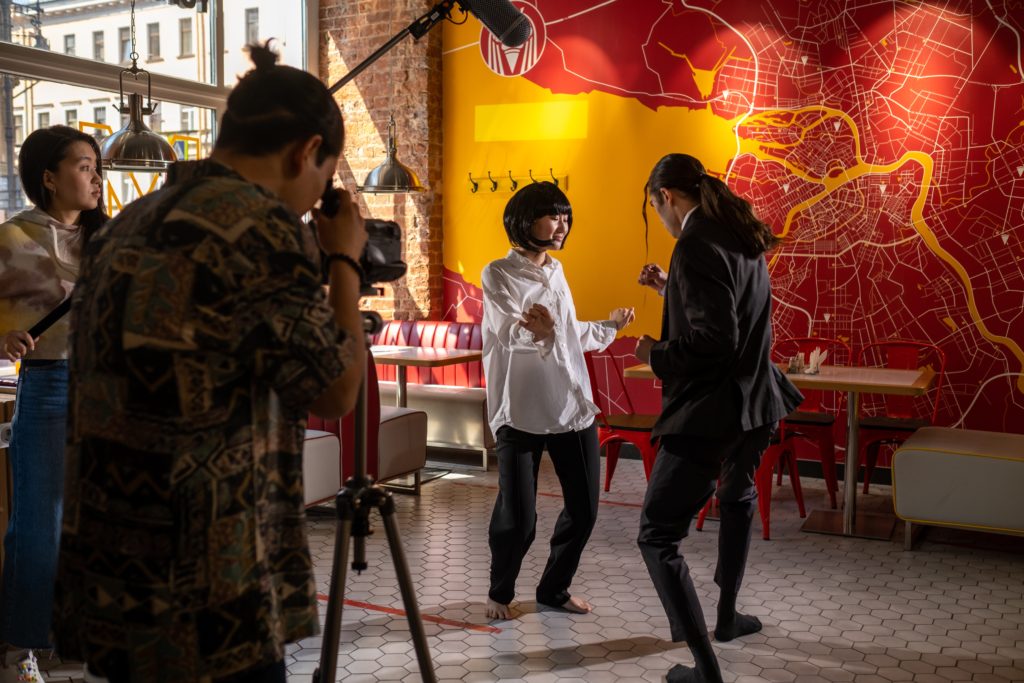Acting is an art that requires learning and practice. It is a skill that can be developed and refined.
There are many acting techniques that you can use to improve your acting.
These techniques are important to learn because they can help you get a better understanding of your character and the story.
In this blog post we will discuss the 8 most important acting techniques and how you can use them to further your career.
What is an Acting Technique and How Does it Actually Work?
An acting technique is a set of specific skills, knowledge, and behaviors that actors use to convey an emotion or perform an action on stage or screen.
There are many acting techniques in use today and they are not limited to just one type of theater or film.
You should use what you have learned when you practice and when your on set.
What is the importance of acting techniques?
Acting techniques are used in the theater to create a lifelike and realistic portrayal of characters.
They involve the use of sensory memory that creates a lifelike and realistic portrayal of the character.
In acting, it is important to have a solid foundation of technique.
If you don’t know how to act, you’re going to be stuck in the same old roles and won’t be able to grow as an actor.
How do you learn acting techniques?
The best way to learn acting is by taking acting classes where you can interact with other actors and teachers of the craft. You can also ;
- Read Books: It is always good to read biographies of actors and actresses or books about acting technique. Get lost in their pages and meet your literary heroes.
- Read Plays and Monologues: This will help you understand characters and grow as an actor.
- Record Yourself: Recording yourself can be a cool way to organize your thoughts. Recording yourself can also be helpful in improving your skills and getting feedback from other people.
- Practice Cold Readings: Cold readings are used in auditions to test actors ability and they must prove they have the ability to improvise in front of an audience.
8 important acting techniques
1. Stanislavski’s System
Is a method of acting that has been around since it was introduced by its creator, Vladimir Stanislavski.
It is known for requiring the actor to find similarities between themselves and their character in order to give them a more genuine characterization.
Stanislavski’s system is a technique that actors use to draw upon their own feelings and experiences to convey the “truth” of the character they are portraying.
2. Method Acting Technique
The method was created by Lee Strasberg, who is known as one of the most influential acting instructors in Hollywood.
His method is based on the idea that actors should not just immerse themselves in emotion while portraying a character, but have a deep understanding of what they are feeling by using a technique called substitution.
3. Stella Adler
This technique is founded on an actor’s ability to imagine a character’s world.
Adler believed that over-reliance on personal and emotional memories limited an actor’s range.
Research has shown that the way we perceive objects influences how we think about them.
Entering the theatre, Adler began to explore how this could be used as a creative tool in staging.
Her actors were taught to deliberately observe the textures, aesthetics, and sounds of everyday life, enabling them to conjure detailed and realistic mental images on stage.
4. Meisner Technique
Is based on Stanislavski’s system.
Requires you to focus totally on the other actor as though they are real and only exist in that moment.
Meisner Technique makes the actors in the scene seem more authentic to the audience, it creates a feeling of reality, not just mimic reality.
5. Michael Chekhov
The technique works on/with your imagination, feelings, and atmosphere.
The goal is to show a more realistic portrayal of the world.
6. Uta Hagen
Hagen’s acting techniques encourage actors to observe their environment and its daily life rather than over-intellectualizing the process.
Uta Hagens techniques has five key elements:
- Substitution
- Transference
- Specificity
- Authenticity
- and preparation
7. Viola Spolin
Spolin’s techniques help actors to improvise on stage, riff upon their characters, and create a natural performance.
Her techniques take the form of games, which helps actors tap into their creativity and be present in some capacity beyond just performing a monologue.
8. Practical Aesthetics Acting Technique
Created by playwright/film director, David Mamet.
Combines teachings from Stanislavski, Meisner and the philosopher Epictetus.
Actors break down a scene into the four basic components:
- The literal
- The want
- The essential action
- The “as if”
Practical Aesthetics Acting Technique helps you become immersed in the character’s world for a more realistic performance.
Conclusion
By learning and understanding these acting techniques you will become a better actor regardless of whether or not you are currently enrolled in classes or working as an actor.
Leave a comment with your opinion or any questions you may have below…


